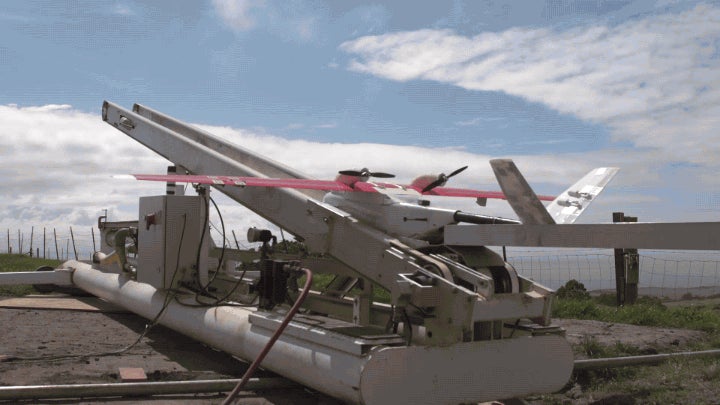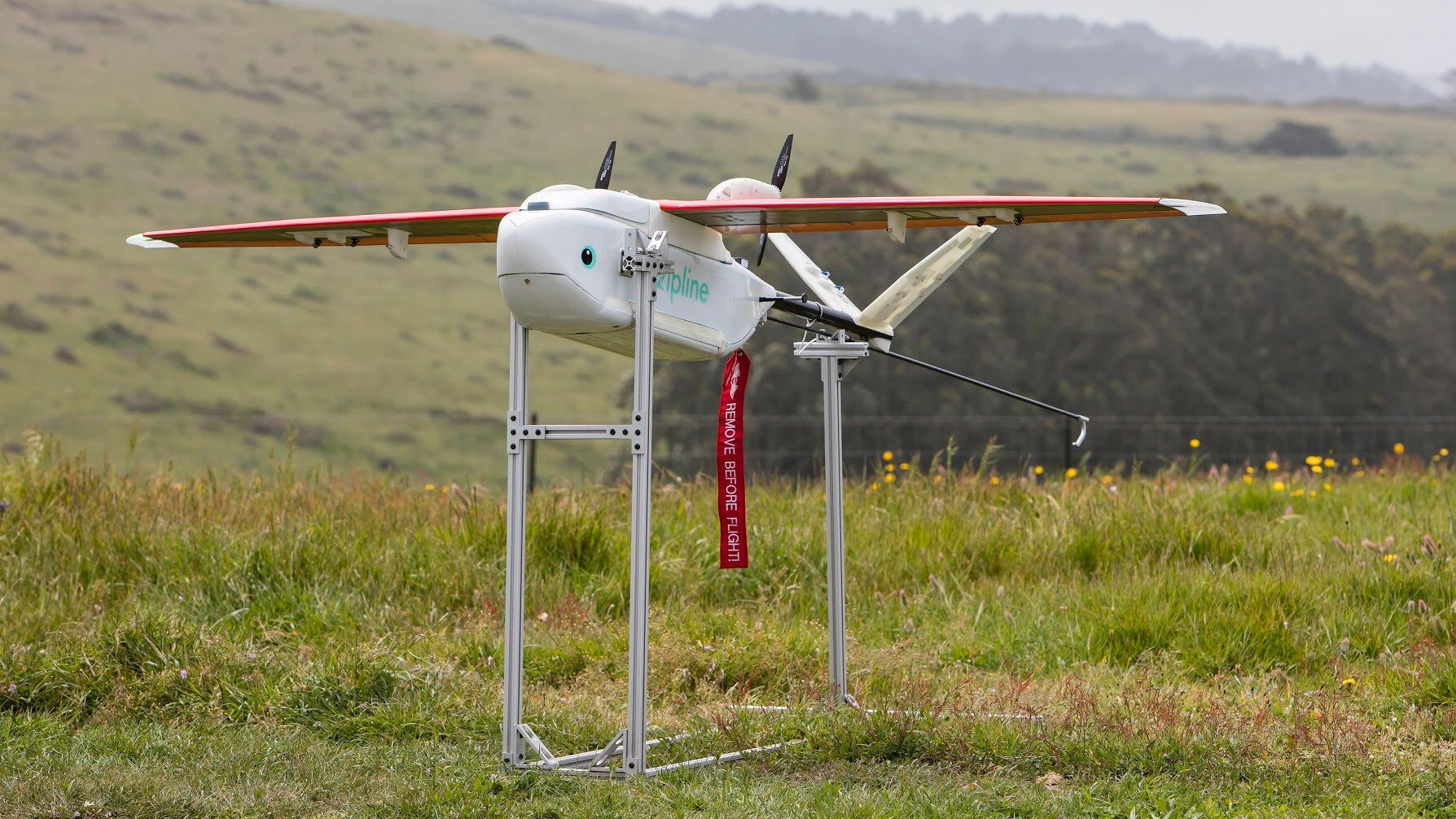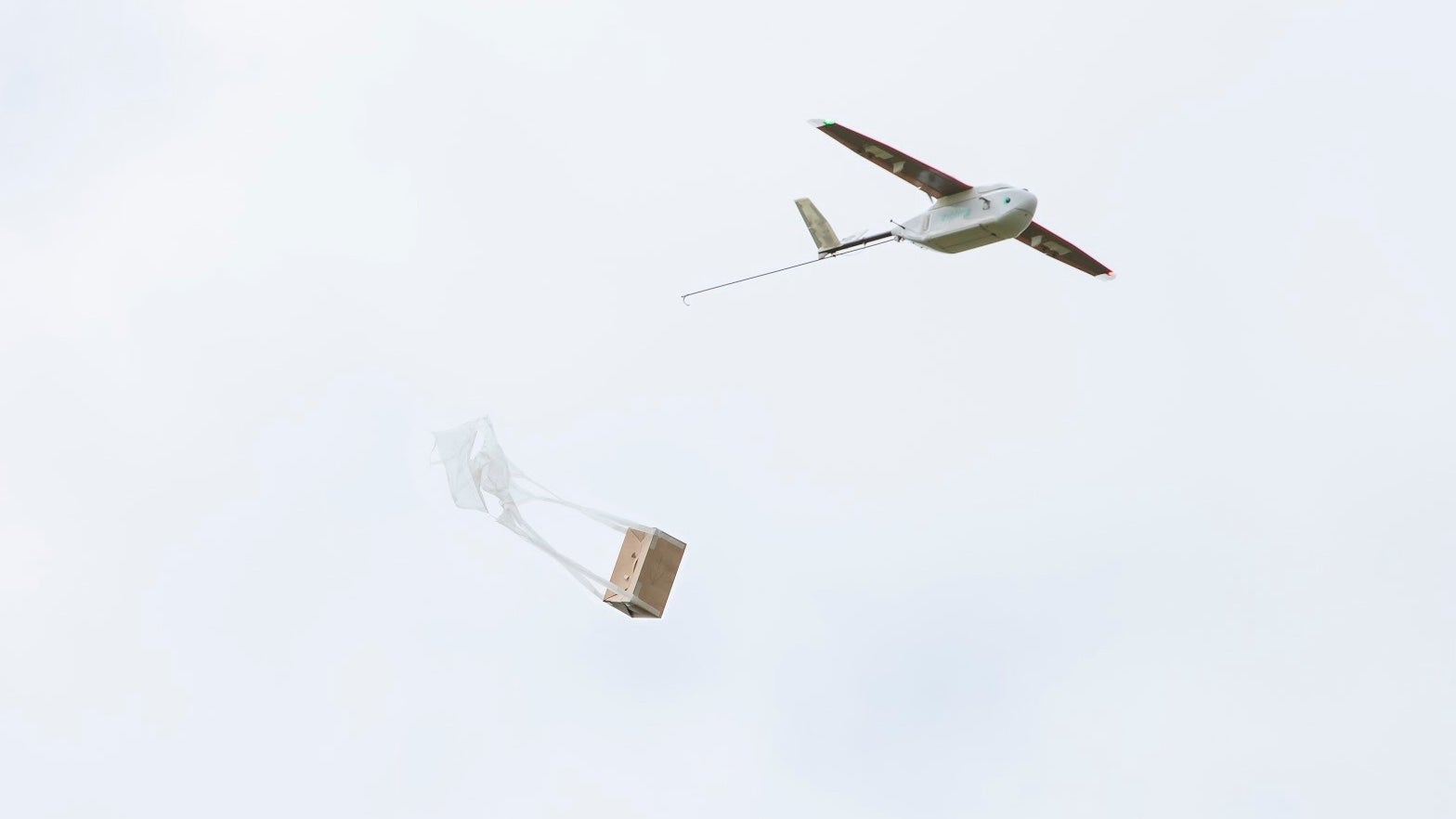Alex Cranz
Drone deliveries are the future. Years from now we really will be able to order something online and have it dropped off at our door hours later by a tiny flying robot. But presently there are some issues with drone deliveries. And they’re only partially related to aviation laws. Quadcopter-based deliveries have to struggle with the weather, tiny delivery zones and drones potentially falling out of the sky. Zipline, a robotics company based out of San Francisco, claims it solved those issues.
The company aims to change the drone delivery game with an $US800,000 ($1,093,938) grant from the UPS Foundation, the shipping giant’s charitable arm, and assistance from Gavi, The Vaccine Alliance. While Google or Amazon are testing their drone delivery services in the US, Zipline is planning to use its new service to save lives in Rwanda.
That’s a helluva beta test.
The organisations announced their plans at a press event outside San Francisco last week. Unlike the other drones being tested for delivery services, Zipline has opted to produce fixed-wing aircrafts. This, Zipline CEO Keller Rinuado claims, makes the drones much more adaptable to nasty weather and allows them to make every single component in the drone redundant.
At one point during the press event he motioned to the guts of a drone and said, “I could cut any wire and this thing would still fly.”
Redundancy is critical because Zipline’s drones won’t be dropping off your eBay order, but will instead be used to make regular deliveries to remote Rwanda hospitals. These hospitals have struggled with supplies in the past due to their isolated locations. Most life-saving supplies are currently delivered via motorcycles — which can be attacked or stolen by criminals, or delayed by bad roads.
The Zipline drones will avoid all that by flying 90m to 120m above the ground and dropping their payloads with a paper parachute. And because they’re made of 3D-printed parts and require little manpower to fly, the drones cost about the same as a motorcycle delivery too.
But where after a motorcyclist makes a delivery they would then have to make the same gruelling journey back to urban areas, the drone can simply fly home to base. Because the Zipline drones are fixed-wing aircraft, that base can be much further away than the typical 5km range of a more traditional quadcopter drone.
The drone network is expected to go live a little later this year, with up to 150 daily deliveries to 21 remote Rwandan hospitals, and Rinuado has given his company a pretty easy metric for success — just be more reliable than the current network of deliveries via motorcycle. “If we are better and more efficient than motorcycles than we can grow exponentially in the next 10 years.” It’s a low bar, and Zipline wants to soar right over it.
All images: UPS/Zipline


